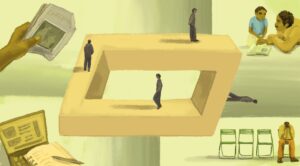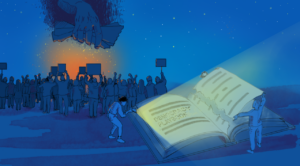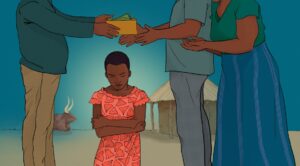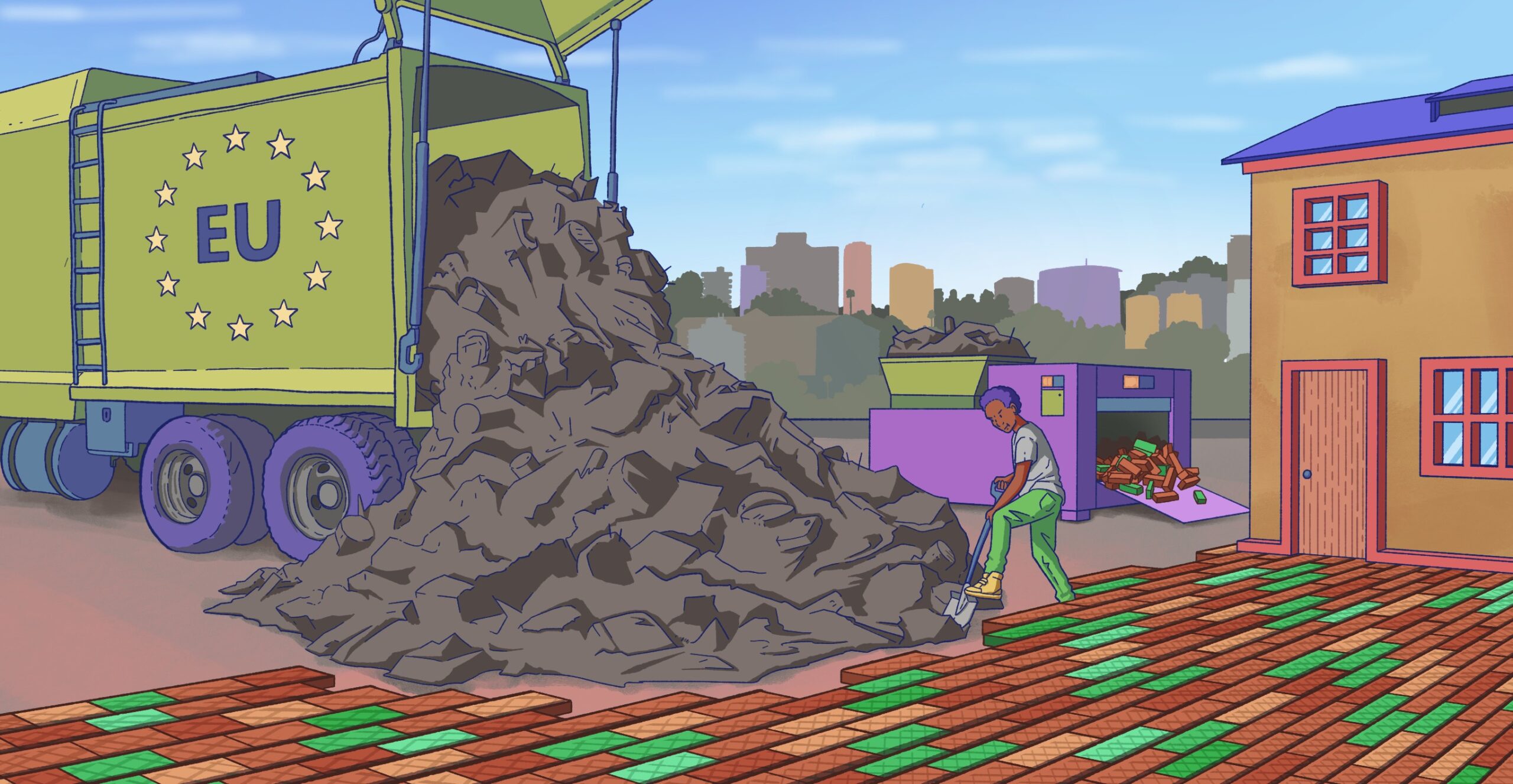
Can plastic bricks pave a road out of Kenya’s plastic waste problem?
- Written by Kimani Chege
- Illustration by Walker Gawande
In the latest from our Chain Reactions series, we look at a possible solution to plastic waste: transforming it into building materials. The view from Kenya.
On the edge of Kenya’s Rift Valley, half an hour drive from capital city Nairobi, lies the Karai Munsingen children’s home, an orphanage built with donor funds from Germany. Due to its geographical location, gusts of winds blow from Kenyan highlands and zoom towards the valley. In the drier months of the year, the wind is accompanied by dust, blanketing the whole Karai area.
Similar to other residents of the area, the children’s home has found itself addressing the wind challenge while also facing numerous funding gaps. “It gets worse in February and March, you barely can see,” notes Juliet Gikunda, a caretaker of the orphanage.
As a way of mitigating this menace, the children’s home has sought help from an unlikely source: the Dandora dumpsite. This dumpsite is home to 850 tonnes of waste generated daily within Nairobi according to the United Nations Environmental Programme (UNEP), a modest estimate. All sorts of waste is dumped here, the majority being plastics, with the local city authority having little or no intention of tapping into the potential recycling goldmine.
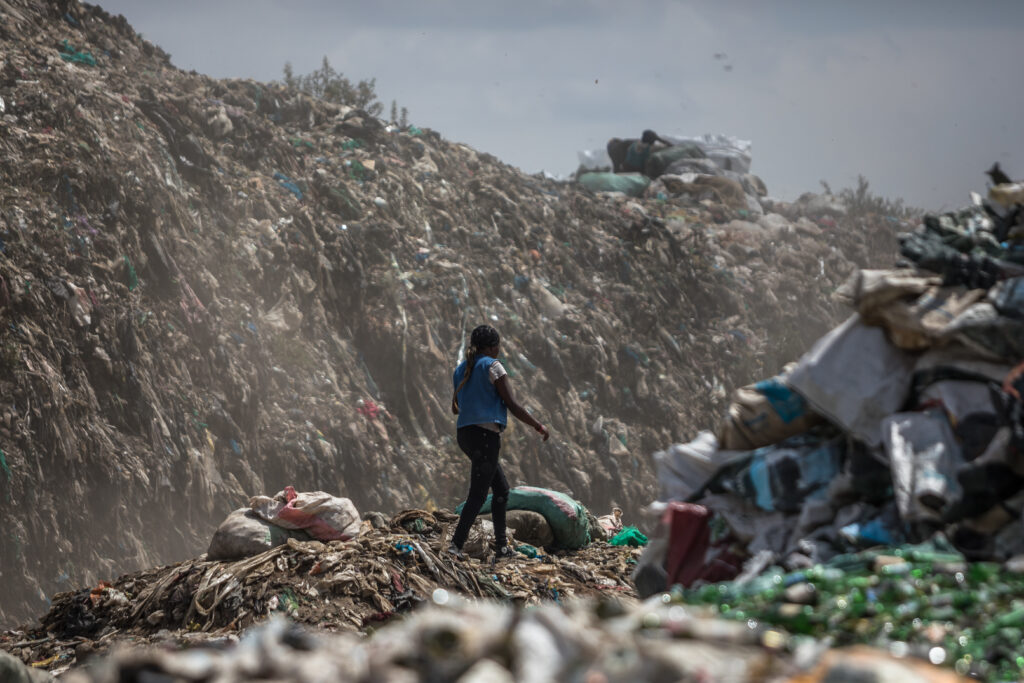
It is here at the 30 acre large dumpsite that a solution to the Karai Munsingen children’s home began. When Juliet and other managers were concerned about the constant dust menace, they mooted an idea of at least paving the verandas around the home to provide the children a safer and cleaner place to play.
“Some of our children are extra active. We were concerned they were being affected by the dust when it is the dry season and when it rained, they would not find a place to play. We needed a solution that worked for our situation.”
Juliet Gikunda
The management of the orphanage sought the help of Nzambi Matee, a Kenyan material engineer and entrepreneur whose start-up Gjenge Makers is making paving blocks (or “pavers”) by mixing chopped plastic waste from the Dandora dumpsite and sand.
It is a journey that started in her parent’s backyard, testing various samples of plastic pavers with local masons and ending up in a modern factory in Nairobi’s sprawling Industrial district. Along the way, she has won a global accolade for her effort in curtailing Kenya’s plastic menace. She is a Young Champion of the Earth 2020 Africa winner at the United Nations Environment Programme (UNEP).
"Build Yourself"
At the Gjenge Makers, which translates to ‘build yourself’ in Swahili, a dozen men and women are at work, jobs created through the project. It is not a complicated process in developing pavers, but one that needs precision and clear understanding of material science.
To achieve this fete, Gjenge Makers collects both industrial plastic waste and consumer plastic waste and shreds it into small sizes. This material is then mixed with sand and heated at a temperature above 350 degrees Celsius, creating strong, fibre-like bonds. The mix, which forms a sludge, is then compressed with a high pressure machine that has been locally fabricated, molding it to the required size. The product is a stronger paver compared to concrete. The pavers are also cheaper, Nzambi adds.
When she began her research in her mother’s backyard in 2017, she was constantly incensed by the piles of plastic waste dumped in many parts of Nairobi and Kenya in general.
Seeing this as an opportunity, Nzambi, a graduate of University of Colorado Boulder, decided to take this challenge head on, with great inspiration from her role model and countrywoman, Nobel Prize Laureate Wangari Mathai.
At the time, Kenya had not adopted a policy banning of single use plastic waste, which it finally did in 2017 through National Environment Management Authority (NEMA). Before this ban, there were approximately 100 million plastic shopping bags every month generated for use in supermarkets and other retail outlets. However, the ban was not fully effective: millions of single-use plastic papers still sneak through Kenya’s porous borders.
Additionally, the government did not ban plastic bottles, which continue to ravage the country’s drainage system. It is those plastic bottles that Gjenge Makers is utilizing to develop their pavers.
To come up with a prototype, Nzambi spent almost one year going through different sizes and trying it out with different masons to determine the best quality and size for the Kenyan market. “It was not an easy period because even my neighbours complained of foul smell from my experiments,” she adds. Now she has a product that she is proud of.
In a month, she is able to turn between 10 to 20 tonnes of plastic waste into pavers of different colours, with Gjenge Makers managing to produce 1,500 every day. It is such pavers that she was able to sell to the children home and other buyers throughout Kenya.
“The demand is high, but our capacity is still low. I have more orders than my equipment can meet.”
-Nzambi Matee, founder of Gjenge Makers
A scourge of plastic waste
However, the efforts by Gjenge Makers are limited, given the amount of waste already being generated in the country. In 2020, Greenpeace International sounded an alarm over alleged efforts by the US under a negotiated trade deal to dump some of its plastic waste into Kenya.
Though the allegations were denied by the American Chemistry Council, major US news outlets carried a letter from the director of the council seeking to have Kenya as a future hub for supplying US made chemicals and plastics to other countries in Africa. This meant that Kenya would import US plastic waste and process it for the region.
The case of plastic waste importation is prevalent not just in Kenya. Global statistics website Statistica.com puts Germany as the largest exporter of plastic waste in the European Union, shipping more than 720,000 tons, with Turkey being the major recipient. Other major recipients of plastic waste from the EU are countries in South East Asia, while Africa receives a small fraction.
A new investigative report by lobby group Changing Markets Foundation notes that there is a change in the dynamics of plastic waste exports into Africa, with many EU countries dumping junk plastic clothing. According to the investigation conducted around Kenya’s dumping sites, many of the 112 million items of used clothing shipped directly from the EU to Kenya each year, up to one in three contain plastic and are of such a low quality that they are immediately dumped or burned to heat water, for cooking and even allegedly to fuel a power station.
Researchers, activists and academics have different suggestions for how to stop plastic waste either at the source or change how it is disposed of. Here are a few.
“Extended producer responsibility” regulations require the manufacturers of plastic to be accountable for the “end of life” of the products they produce- for instance, by collecting the waste, sorting it, recycling it or otherwise being financially on the hook for its disposal. Kenya has drafted such a provision, and the EU’s Waste Framework Directive could also include such a provision.
Governments can subsidize the research and development of sustainable plastic alternatives or create financial incentives for the use of alternative packaging materials (like paper and cardboard). By encouraging a circular economy mindset, governments can also promote reuse of plastics that are hard to recycle.
In 2022, 174 nations came together in Nairobi to agree on the need for a United Nations legally binding instrument governing the use of the plastics. The treaty would account for the full life-cycle of plastics and curtail its pollution of land and ocean. The work on such a treaty or agreement is supposed to be underway by 2024.
Sharing a solution
Nzambe does not however want to look at the international dumping as an issue. Rather, she notes the need to increase efforts to collect the already existing plastic waste by collaborating with other processors both locally and internationally.
“For now, I am willing to share the technology with other people in different locations in Nairobi or any other town in Kenya and around East Africa. We need to export the solution. That is more important than thinking of importing problems.”
She notes that, rather than other entrepreneurs interested in similar work incurring massive investment in time and money, she is willing to license the technology to them so as to multiply the impact. This includes developing the required machinery and calibration for optimum production.
The efforts by Gjenge makers are step in the right direction in reducing Kenya’s plastic waste. However, the extent of the problem both at local and international level is of great magnitude.
At a global level, according to the European Environmental Agency, less than 10 % of about 6 300 million tonnes of plastic waste generated between 1950 and 2015 has been recycled. Over 60 % of the plastic ever made (since 1950) is in landfills or in nature, including in the oceans. The rest has been incinerated or has not been accounted for.
Back at the Karai Munsieng Children’s home, things are not the same again for almost hundred children. The verandas of the orphanage have received a facelift providing a more conducive area for play. “We used almost a Million shillings (7,500 Euros) to get the pavers. We are happy that our children don’t turn up dusty or muddy, when it rains. It is a real transformation,” adds Julliet Gikunda.
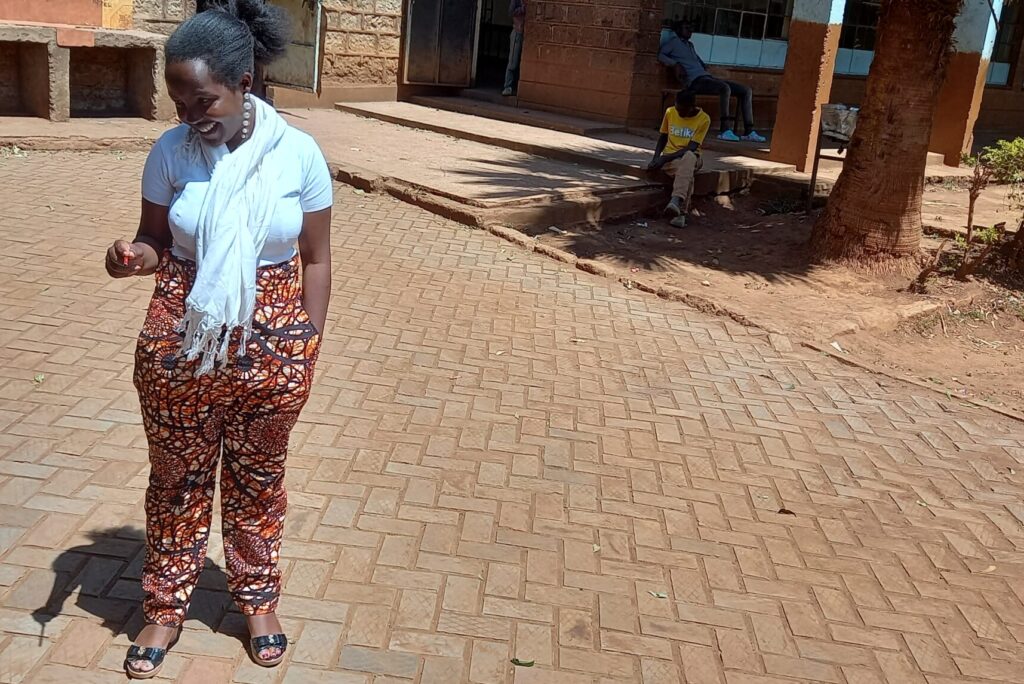

This project was funded by the European Journalism Centre, through the Solutions Journalism Accelerator. This fund is supported by the Bill & Melinda Gates Foundation.

